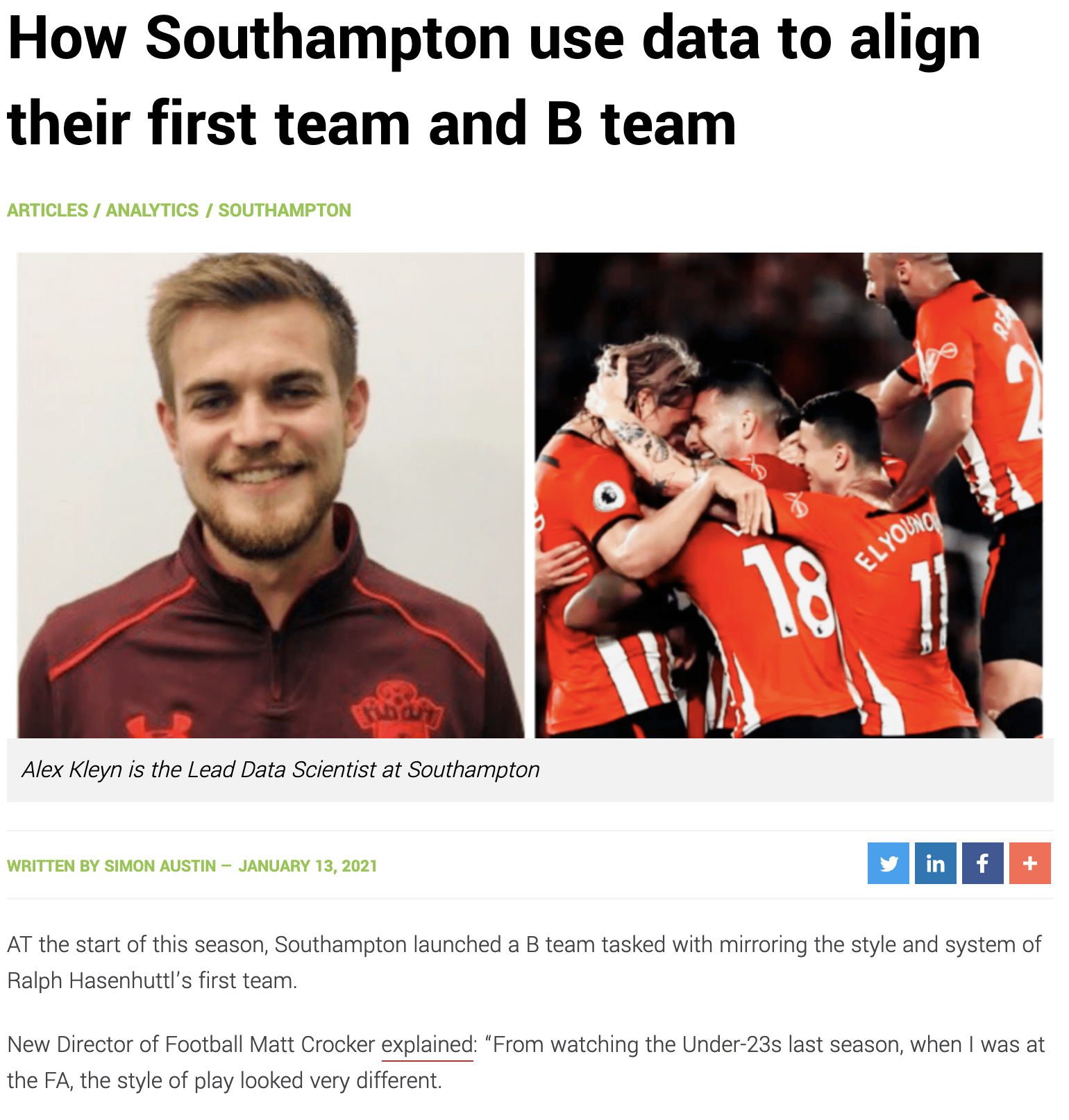Last week’s sports news was an explosion of evidence that the industry is in a performance intelligence arms race. Under pressure from COVID-19 and with Brexit complicating access to the international transfer market, UK football clubs are racing to find and exploit every possible advantage for homegrown talent, fully aware the world beyond can tap players they can’t. Amid the sudden sea change, many are turning to data and analytics to navigate a path to success. Our industry has witnessed a mad dash to data before and this isn’t exclusive to UK football, but what’s different this time is the desire to directly correlate data to aligned processes and new organizational structures. The performance intelligence arms race sweeping elite sports today reflects this wider, wiser recognition: data has got to drive collaboration and alignment.

Last week’s Training Ground Guru writeup of Man City’s fierce competition with Liverpool to hire top data scientists showcases the performance intelligence arms race in full swing. But it’s not just about having the talent or the information; it’s about aligning people and processes around the right structure and strategy.
Last post saw Arsenal doing just that, rewiring its scouting department for a more data and video-driven approach that relies less on live scouts scattered around the world.

We see Arsenal’s move as less about cuts and more about establishing a structure so people can collaborate and align around a strategy
The performance intelligence arms race played out across the Atlantic too, with news of the Panthers picking data-driven Scott Fitterer for GM. Panthers owner David Tepper wanted “alignment and collaboration” with the telling insight “Collaboration doesn’t mean you don’t have arguments.” Tepper is spot on: collaboration means you have arguments about the right things. And one of those things has got to be structures that empower collaboration.
Returning to UK football, Southampton illustrates this point perfectly, as they’re using data to model and mirror the first team’s style of play with their B team, tracking differences and identifying opportunities for improvements in both. Southampton isn’t just seeking data to tweak processes around the edges; they’re applying data to align their structures to the first team at both a strategic and technical level. A team this forward-thinking will get after any barriers to collaboration they might uncover.
Necessity is the mother of invention, and from COVID-19 to Brexit, there’s necessity aplenty across industry. The push for data-driven collaboration now is a response, and as I’ve written previously, we really see this as the titanic shift of 2021. It’s not data at all costs or analytics for analytics’ sake (as the NHL’s suspending sensor-laden pucks last week makes crystal clear); it’s data to inform and drive better processes and collaboration to help decision-makers match objective information to their invaluable experience and deep knowledge of their own organizations. That’s the right role for analytics, and the point of the performance intelligence arms race. The organizations that do this best will win that race.
I’ll be sharing thoughts on sport’s most impactful developments and news on an ongoing basis. I welcome your feedback on Twitter or at stephen@kitmanlabs.com.


